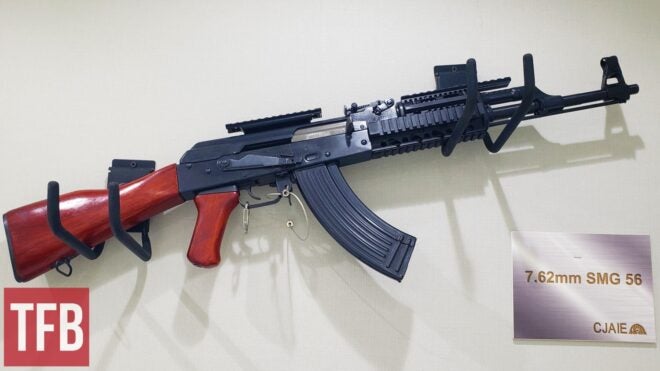This article is the final chapter of a 4-part series. In Part 1 I talk about how the production of AK began in China, Part 2 was dedicated to the “golden age” of Chinese AKs, and Part 3 was about the gradual decline in quality and the underlying reasons for it. In Part 4, we will take a look at the latest descendants of the Type 56 rifle, including the Chinese AK 103.
AK History @ TFB:
- The AKS-74U Krinkov Short Barrel AK History & Review
- The Unknown History of Russian AK-12 Kalashnikov Rifle: Part 2
- The Unknown History of Russian AK-12 Kalashnikov Rifle: Part 1
- Mystery Surrounding the Very First AK-47 Rifle
- CIA Agent’s Memory Sketch of the Kalashnikov Rifle
As time goes by, Chinese manufacturers keep adapting to the ever-changing market. There is still demand for cheap AKs, but many clients these days want their guns to have Picatinny rails, even when these clients have a dubious understanding of what those rails do exactly. The overall consensus seems to be: “if an AK has rails, it is modern”.
Therefore, at the IDEX expo in UAE, all Chinese-made AKs featured some sort of a rail system and side mounts with Picatinny rails, demonstrating an interesting combination of bright red wood and quad rails.
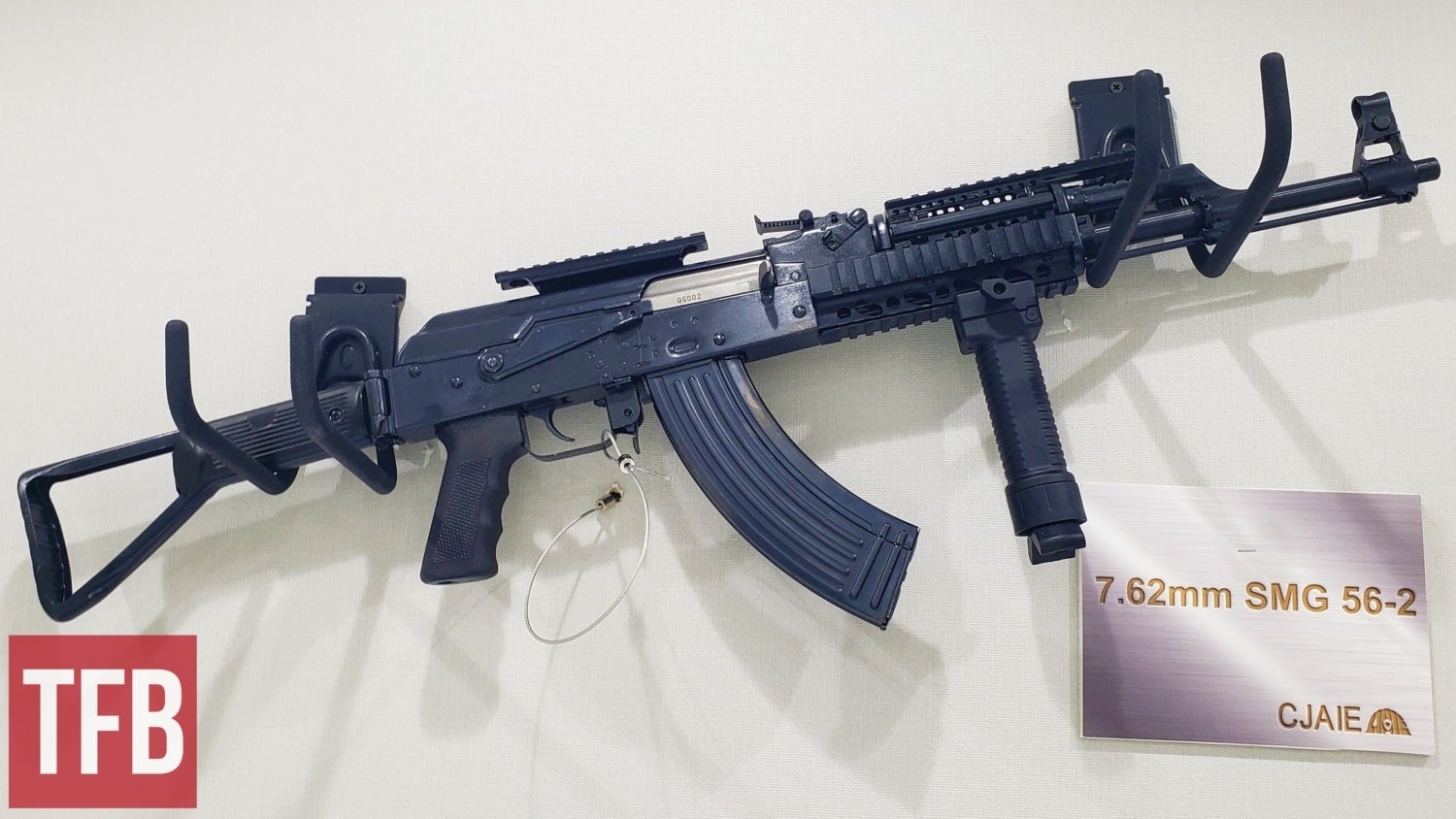
Improved Type 56-2 at the IDEX exhibition in Abu-Dhabi
There is another interesting sign that Chinese firearms manufacturers are very good at adapting to market demands. Recently I came across an interesting Type 56 in Somalia. It looked exactly like any other Type 56, but it was semi-automatic and had just two axis pins instead of three.
And it isn’t a conversion from a fully automatic gun – there is no third hole, the bolt carrier doesn’t have an auto-sear trip, and there is no cut for auto-sear in the receiver rails. With this setup, the rifle would comply with the most senseless restrictions, even in the US and European Union. Apparently, Chinese manufacturers are very familiar with recent gun laws and restrictions.
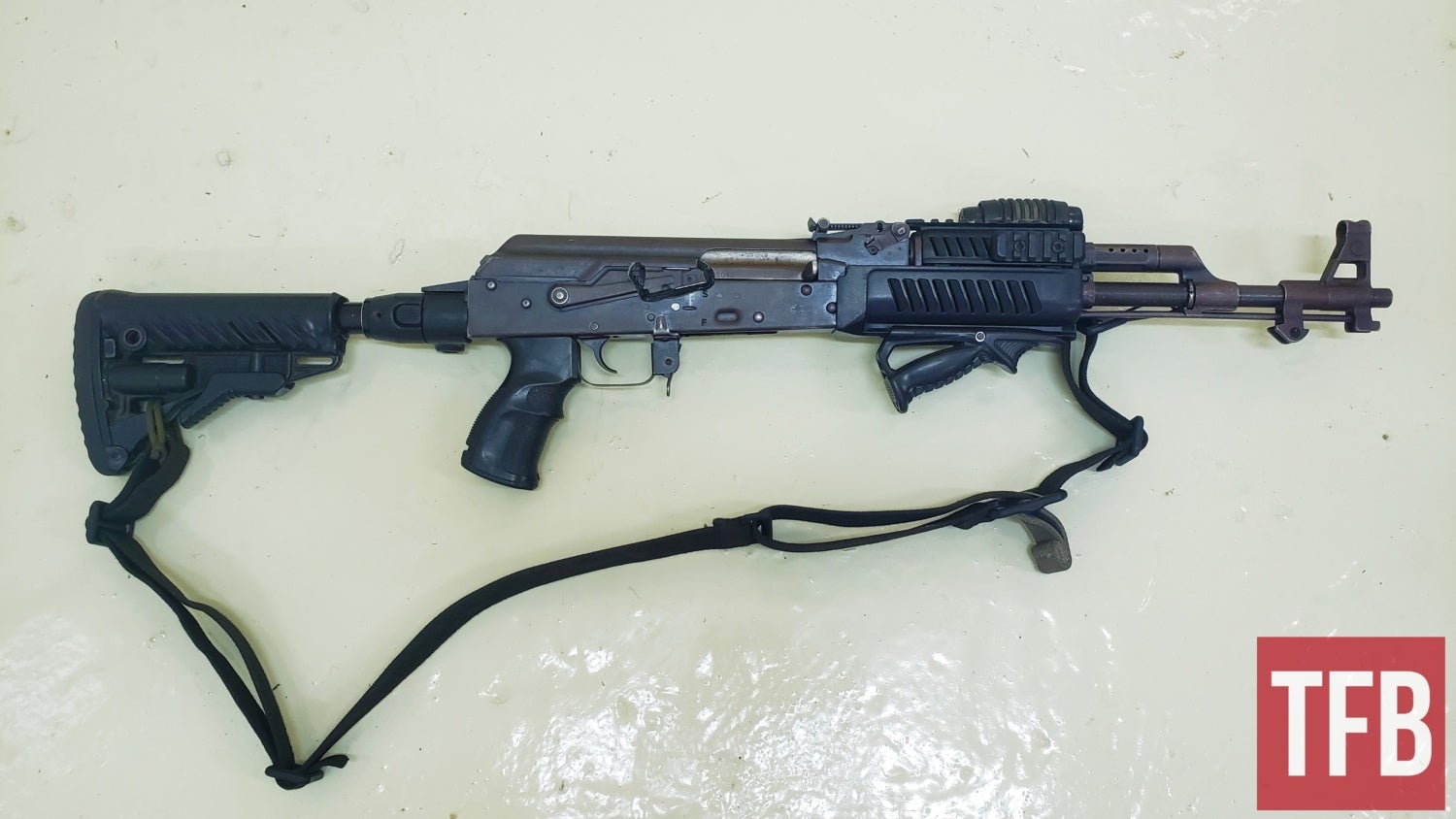
Semi-automatic Type 56
To this day, various versions of Type 56 are the main contender in any procurement request for government clients who want cheap AK rifles. But the Chinese defense industry did not stop there and copied another established design, opening a new chapter in the history of Chinese AKs.
During one of my past visits to Somalia, I came across a large number of rifles that I have never seen before. That doesn’t happen very often, and frankly, it is one of my favorite things about being an armorer – when you actually get to see something new and exciting.
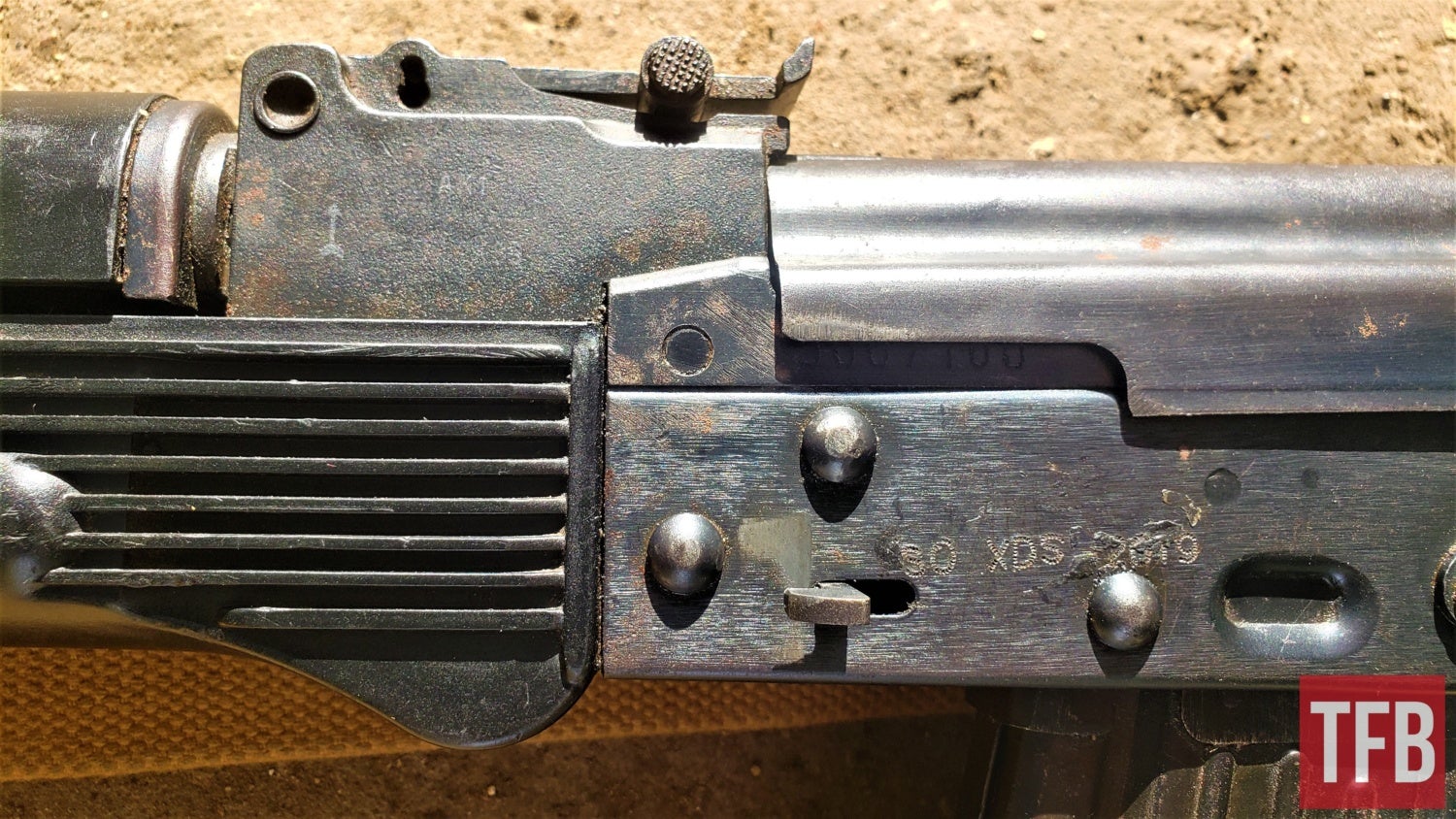
Chinese AK 103 – fake Izhmash markings
The guns were marked “AK 103” and had a Russian Izhmash “arrow in triangle” stamp. The problem is – with Russian AKs, you will never see any sort of stamp on the rear sight block. I am pretty familiar with the original AK 103, and these markings looked as convincing as the “Abibas” and “Neki” brand names on a pair of sneakers.
As I inspected the gun, more and more oddities revealed themself. The gas block was at a 45-degree angle when it is supposed to be 90 degrees on an AK 103. Everything felt weird – glossy paint, wobbling folding stock that reminded me of the toy guns I had when I was eight years old.
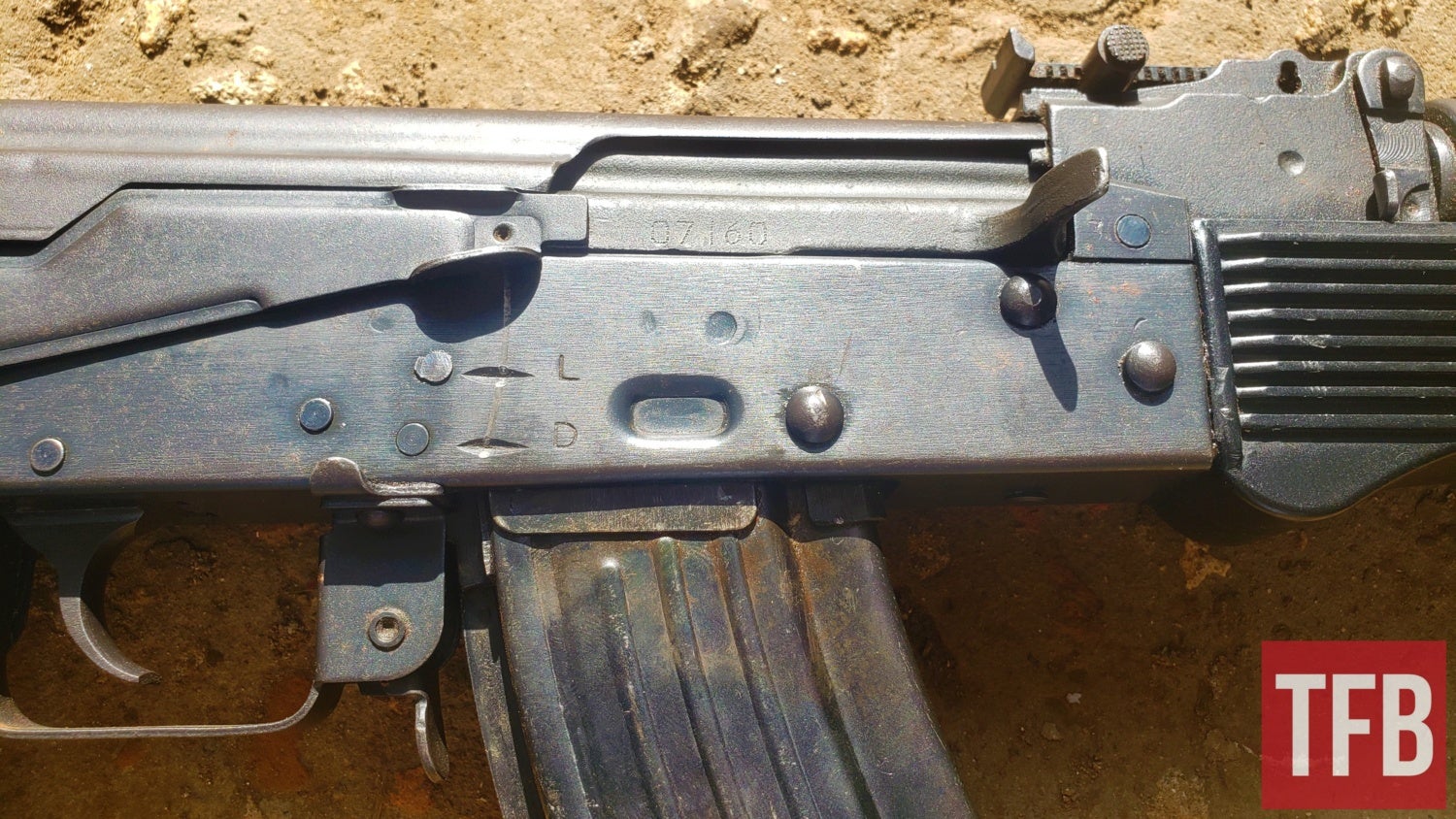
Chinese AK 103 – selector markings
The markings on the selector were “L” and “D”, the rear sight was marked up to 800 meters and had the letter “D” on it – all of the tell-tale signs of a Chinese-manufactured rifle.
It was an obvious explanation, but I thought it can’t be that simple. I started digging into my archives and almost convinced myself it was an Iranian-made AK. But the Iranian-made AKs have a “Russian” rivet pattern on the trunnion when both rivets are on the same height. This gun clearly had a Chinese rivet pattern on both sides of the trunnion.
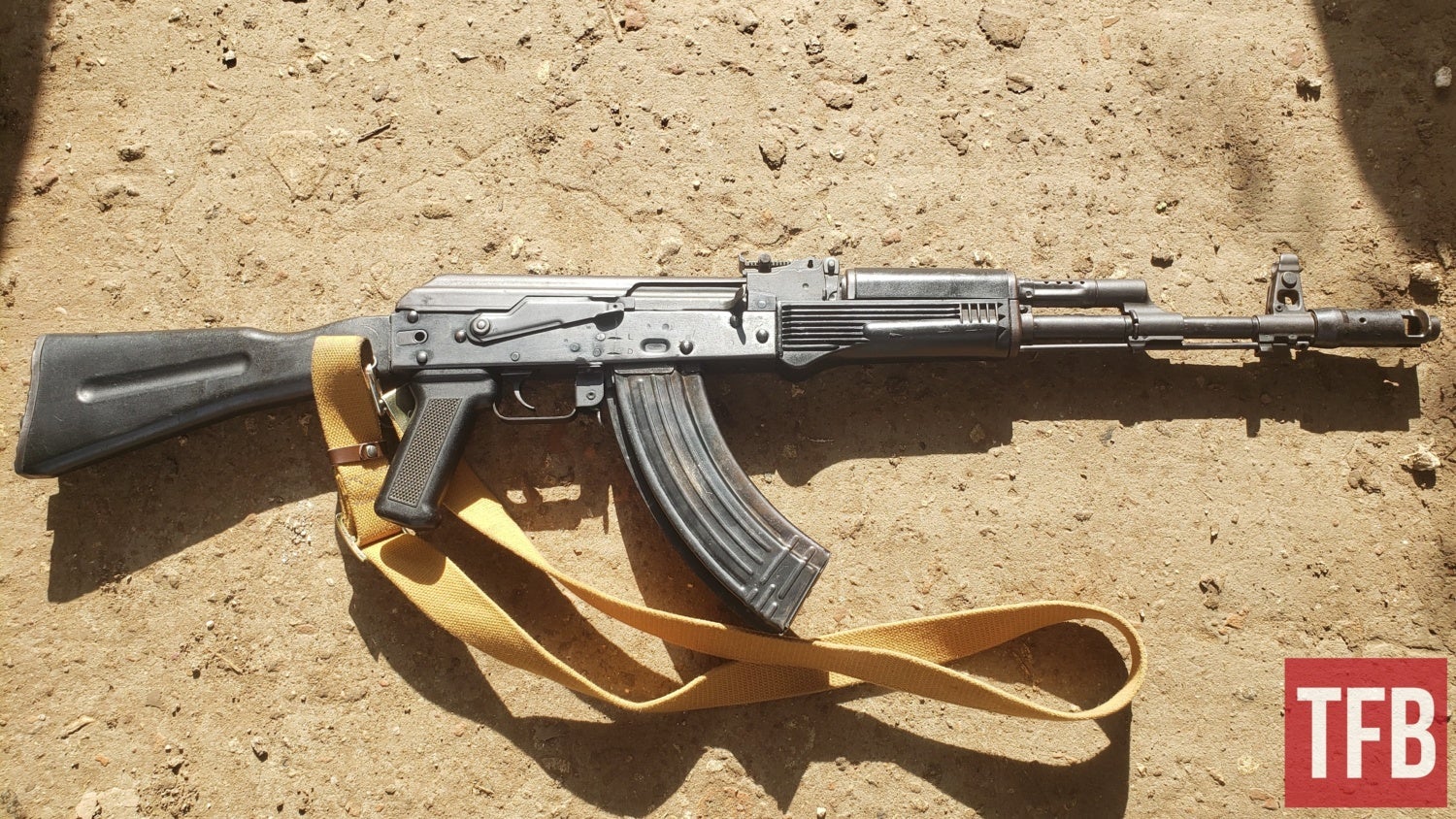
Chinese AK 103 – right side
I continued looking for the differences with the Russian AK 103 and found a few more: the gun has a thick-stemmed bolt from the AKM era, the magazine release lever was clearly Chinese, and even the muzzle brake/compensator was a different shape compared to the original.
Any experienced gun enthusiast would spot those differences and realize it is not a Russian rifle, but the Chinese manufacturers didn’t actually try to make an exact copy. They wanted a gun that would be cheap to produce; that would use as many existing parts as possible. And if the client knows guns and recognizes it is not exactly what he was looking for – the price should convince him to think twice.
And that seems to be effective. These guns were spotted in Yemen many times as early as 2020, and Cᴀʟɪʙʀᴇ Oʙsᴄᴜʀᴀ, one of the top experts in this field, even posted some comparison pictures.
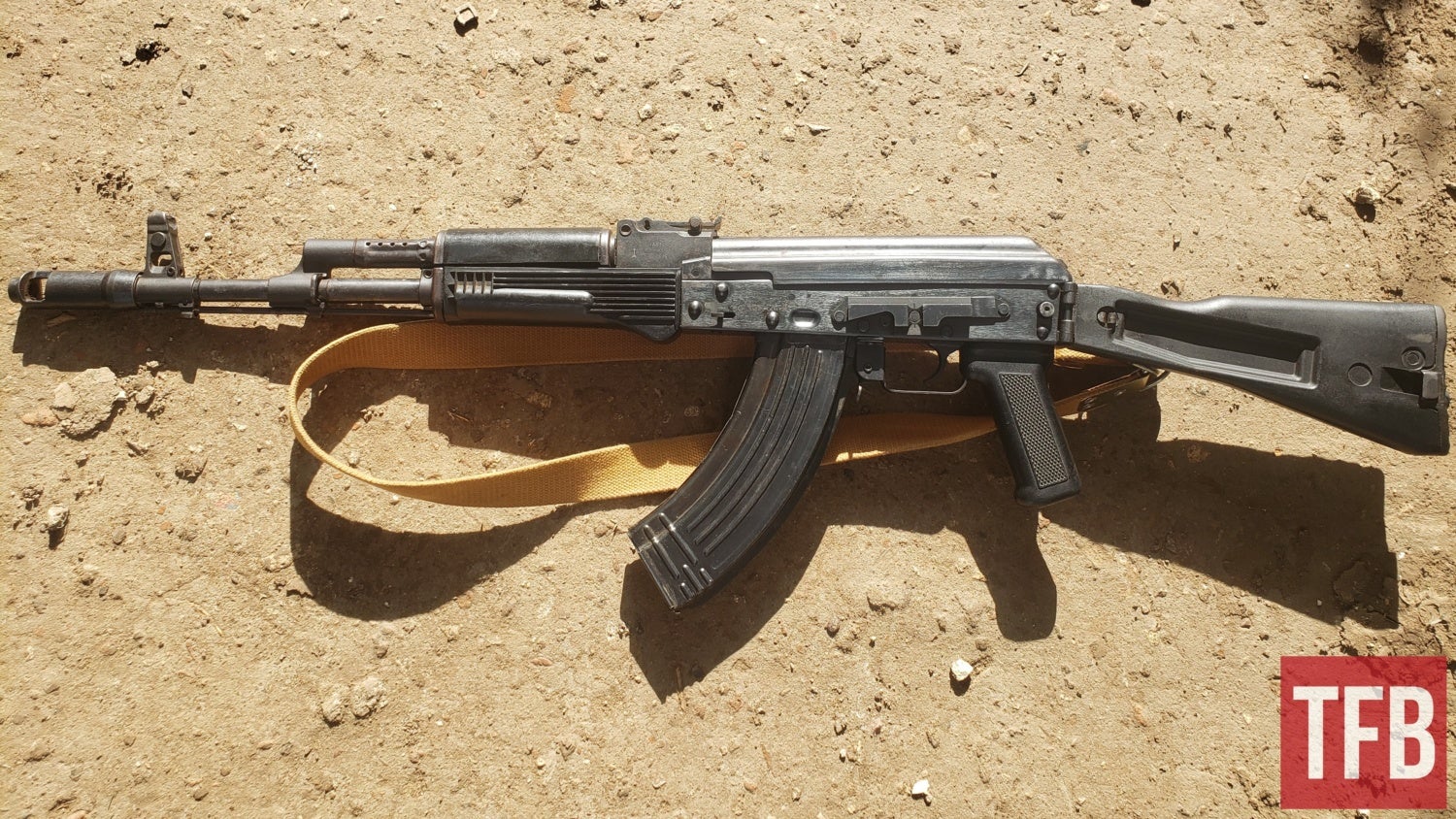
Chinese AK 103 left side
After doing a little more digging, I realized that I have seen those guns before, and not somewhere in the desert or in a mountain hut, but on the show floor of the German firearms exhibition IWA. In 2015, one of the importers had a full lineup of rifles made by SDM – Sino Defense Manufacturing. They had their own versions of all modern AKs, M4s, and even civilian versions of Chinese bullpup rifles.
These rifles are available all around Europe and retail for around $700-$800 USD. The guys from Polenar Tactical did a really good video about those guns, and while the rifle is not top quality, for many shooters this SDM becomes the first, entry-level AK. This proves once again that Chinese AK manufacturers are keeping up with all the trends, they understand the global firearms trade and can effectively adapt their product line, and as a result – for decades, they thrive in this ever-changing market.
This is the last part of my Chinese AK series. Let me know if you would like to read similar stories about AKs from other countries.
 Your Privacy Choices
Your Privacy Choices
